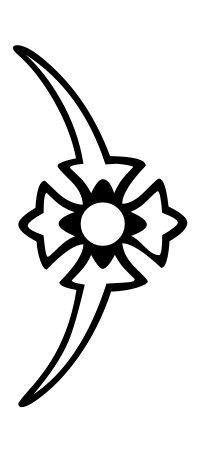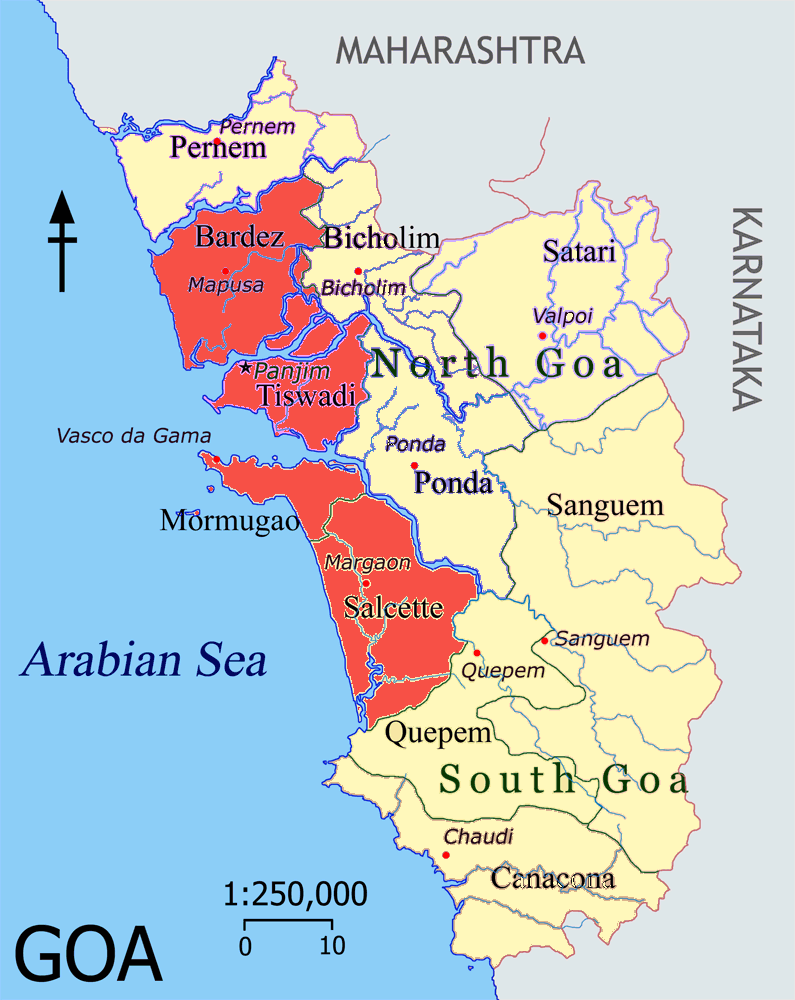|
Xenddi
Xenddi, sometimes spelled as Xendi, was a discriminatory religious tax imposed on the resident Hindu minority by the colonial era Portuguese Christian government in Goa, Daman and Diu in 1704 and expanded to all of Portuguese colonies in the Indian subcontinent by 1705. It was similar to the discriminatory Jizya religious tax imposed on Hindus by Muslim rulers in the region. The term ''Xenddi'' also spelled ''Xendim'' or ''Xendy'' meant " hair tuft", a term for the top-knot hair style of Hindus, was likely derived from the Konkani word for the same. The Xenddi tax on the Hindu artisans and merchants was higher than on the Hindu peasants in Portuguese colonies in India. The Xenddi tax was not payable by those who converted from Hinduism to Christianity. Over 90% of the Goans in the Velhas Conquistas were Catholic in the early 1700s. In its initial formulation, the tax was introduced with the pretext that Hindus did not own any land in Goa and only the Catholics did. Land revenues ... [...More Info...] [...Related Items...] OR: [Wikipedia] [Google] [Baidu] |
José Joaquim Lopes De Lima
José is a predominantly Spanish and Portuguese language, Portuguese form of the given name Joseph. While spelled alike, this name is pronounced differently in each language: Spanish ; Portuguese (or ). In French, the name ''José'', pronounced , is an old vernacular form of Joseph, which is also in current usage as a given name. José is also commonly used as part of masculine name composites, such as José Manuel, José Maria or Antonio José, and also in female name composites like Maria José or Marie-José. The feminine written form is ''Josée'' as in French. In Netherlandic Dutch language, Dutch, however, ''José'' is a feminine given name and is pronounced ; it may occur as part of name composites like Marie-José or as a feminine first name in its own right; it can also be short for the name ''Josina'' and even a Dutch hypocorism of the name ''Johanna''. In England, Jose is originally a Romano-British culture, Romano-Celtic surname, and people with this family name can ... [...More Info...] [...Related Items...] OR: [Wikipedia] [Google] [Baidu] |
Hindu
Hindus (; ) are people who religiously adhere to Hinduism.Jeffery D. Long (2007), A Vision for Hinduism, IB Tauris, , pages 35–37 Historically, the term has also been used as a geographical, cultural, and later religious identifier for people living in the Indian subcontinent. The term ''"Hindu"'' traces back to Old Persian which derived these names from the Sanskrit name ''Sindhu'' (सिन्धु ), referring to the river Indus. The Greek cognates of the same terms are "''Indus''" (for the river) and "''India''" (for the land of the river). The term "''Hindu''" also implied a geographic, ethnic or cultural identifier for people living in the Indian subcontinent around or beyond the Indus River, Sindhu (Indus) River. By the 16th century CE, the term began to refer to residents of the subcontinent who were not Turkic peoples, Turkic or Muslims. Hindoo is an archaic spelling variant, whose use today is considered derogatory. The historical development of Hindu self-i ... [...More Info...] [...Related Items...] OR: [Wikipedia] [Google] [Baidu] |
Portugal
Portugal, officially the Portuguese Republic, In recognized minority languages of Portugal: :* mwl, República Pertuesa is a country located on the Iberian Peninsula, in Southwestern Europe, and whose territory also includes the Macaronesian archipelagos of the Azores and Madeira. It features the westernmost point in continental Europe, its mainland west and south border with the North Atlantic Ocean and in the north and east, the Portugal-Spain border, constitutes the longest uninterrupted border-line in the European Union. Its archipelagos form two autonomous regions with their own regional governments. On the mainland, Alentejo region occupies the biggest area but is one of the least densely populated regions of Europe. Lisbon is the capital and largest city by population, being also the main spot for tourists alongside Porto, the Algarve and Madeira. One of the oldest countries in Europe, its territory has been continuously settled and fought over since prehistoric tim ... [...More Info...] [...Related Items...] OR: [Wikipedia] [Google] [Baidu] |
Christian
Christians () are people who follow or adhere to Christianity, a monotheistic Abrahamic religion based on the life and teachings of Jesus Christ. The words '' Christ'' and ''Christian'' derive from the Koine Greek title ''Christós'' (Χριστός), a translation of the Biblical Hebrew term '' mashiach'' (מָשִׁיחַ) (usually rendered as ''messiah'' in English). While there are diverse interpretations of Christianity which sometimes conflict, they are united in believing that Jesus has a unique significance. The term ''Christian'' used as an adjective is descriptive of anything associated with Christianity or Christian churches, or in a proverbial sense "all that is noble, and good, and Christ-like." It does not have a meaning of 'of Christ' or 'related or pertaining to Christ'. According to a 2011 Pew Research Center survey, there were 2.2 billion Christians around the world in 2010, up from about 600 million in 1910. Today, about 37% of all Christians live in the ... [...More Info...] [...Related Items...] OR: [Wikipedia] [Google] [Baidu] |
Goa, Daman And Diu
Goa, Daman and Diu (, ) was a union territory of the Republic of India established in 1961 following the annexation of Portuguese India, with Maj Gen K P Candeth as its first Military Governor. The Goa portion of the territory was granted full statehood within the Indian union on 30 May 1987, Daman and Diu remained a separate territory until December 2019, when it was merged with Dadra and Nagar Haveli and is today the territory of Dadra and Nagar Haveli and Daman and Diu. The areas of Goa and Damaon are located at southern and northern edges of the Konkan region, geographically separated from each other by land and sea, the two areas were among the many other possessions that were ruled over for centuries, by the Portuguese in Goa and Bombay. For the purposes of local administration, the territory was divided into three districts, Goa, Daman, and Dio district, with the capital in Panjim. [...More Info...] [...Related Items...] OR: [Wikipedia] [Google] [Baidu] |
Jizya
Jizya ( ar, جِزْيَة / ) is a per capita yearly taxation historically levied in the form of financial charge on dhimmis, that is, permanent non-Muslim subjects of a state governed by Islamic law. The jizya tax has been understood in Islam as a fee for protection provided by the Muslim ruler to non-Muslims, for the exemption from military service for non-Muslims, for the permission to practice a non-Muslim faith with some communal autonomy in a Muslim state, and as material proof of the non-Muslims' submission to the Muslim state and its laws. The Quran and hadiths mention jizya without specifying its rate or amount,Sabet, Amr (2006), ''The American Journal of Islamic Social Sciences'' 24:4, Oxford; pp. 99–100. and the application of jizya varied in the course of Islamic history. However, scholars largely agree that early Muslim rulers adapted existing systems of taxation and tribute that were established under previous rulers of the conquered lands, such as those of the ... [...More Info...] [...Related Items...] OR: [Wikipedia] [Google] [Baidu] |
Ponytail
A ponytail is a hairstyle in which some, most or all of the hair on the head is pulled away from the face, gathered and secured at the back of the head with a hair tie, clip, or other similar accessory and allowed to hang freely from that point. It gets its name from its resemblance to the tail of a pony. Ponytails are most commonly gathered at the middle of the back of the head or the base of the neck but may also be worn at the side of the head (sometimes considered formal), or on the very top of the head. If the hair is divided so that it hangs in two sections, they are called ''ponytails'', ''twintails'', '' pigtails'', or '' bunches'' if left loose and ''pigtails'', ''plaits'' or ''braids'' if plaited. Ponytails on women and girls The ponytail can be traced back to Ancient Greece, from records of images depicting women with ponytails in ancient Greek artefacts and artworks, such as the frescoes painted millennia ago in Cretes (2000–1500 BC).Sherrow, V., (2019 ... [...More Info...] [...Related Items...] OR: [Wikipedia] [Google] [Baidu] |
Goans
Goans ( kok, गोंयकार, Romi Konkani: , pt, Goeses) is the demonym used to describe the people native to Goa, India, who form an ethno-linguistic group resulting from the assimilation of Indo-Aryan, Dravidian, Indo-Portuguese, and Austro-Asiatic ethnic and/or linguistic ancestries. They speak different dialects of Konkani language natively, collectively known as Goan Konkani. "''Goanese"'' is an incorrect term for Goans. Language Goans are multilingual, but mainly speak the Konkani language, a Prakrit based language belonging to the Southern group of Indo-Aryan Languages. Various dialects of Konkani spoken by the Goans which include ''Bardezkari'', ''Saxtti'', ''Pednekari and'' ''Antruz''. The Konkani spoken by the Catholics is notably different from those of the Hindus, since it has a lot of Portuguese influence in its vocabulary. Konkani was suppressed for official documentation use only not for unofficial use under the Portuguese governance, playing a min ... [...More Info...] [...Related Items...] OR: [Wikipedia] [Google] [Baidu] |
Velhas Conquistas
{{Unreferenced, date=November 2008 ''As Velhas Conquistas'' or "the Old Conquests" are a grouping of the areas in Goa which were incorporated into Portuguese India early in the sixteenth century AD; as these areas underwent urbanisation they were elevated to ''concelhos'' (municipalities) by the Portuguese Viceroyalty that ruled from the administrative centre at Velha Goa. Having been acquired in AD 1510 or within the next few years, they formed the oldest parts and the core of Portuguese Goa and remain as the central theme in the history geography and culture of present-day Goa and Damaon. The ''Novas Conquistas'' or New Conquests formed the outer periphery of Goa bordering the erstwhile British India. ''Novas Conquistas'' of present-day Goa shares borders with the Konkan province of Maharashtra, and also with Belgaum and North Canara districts of Carnatica. The three ''concelhos'' of the territory are ''Bardes'' (Bardez), ''Ilhas de Goa'' (Tiswadi), and ''Salcette'' (modern-day ... [...More Info...] [...Related Items...] OR: [Wikipedia] [Google] [Baidu] |
Goan Catholics
Goan Catholics ( gom, Goenchem Katholik) are an ethno-religious community of Indian Christians following the Roman Rite of worship from the Goa state, in the southern part of the Konkan region along the west coast of India. They are Konkani people and speak the Konkani language. Missionary activities followed soon after the Portuguese conquest of Goa as Pope Nicholas V had enacted the Papal bull of ''Romanus Pontifex'' in AD 1455, according to which the patronage for propagation of the Christian faith in the East Indies was granted to the Portuguese crown. Their culture is an amalgam of Konkani and Portuguese cultures, with the latter having a more dominant role because Goa, Damaon & Diu had been ruled by Portugal from AD 1510–1961. The notion of Goan identity as a distinct culture among other Luso-Asians or Luso-Indian cultures was forged into India after the annexation of Goa and Damaon in 1961. The Goan Catholic diaspora is concentrated in the Persian Gulf coun ... [...More Info...] [...Related Items...] OR: [Wikipedia] [Google] [Baidu] |

.jpg)

.jpg)


